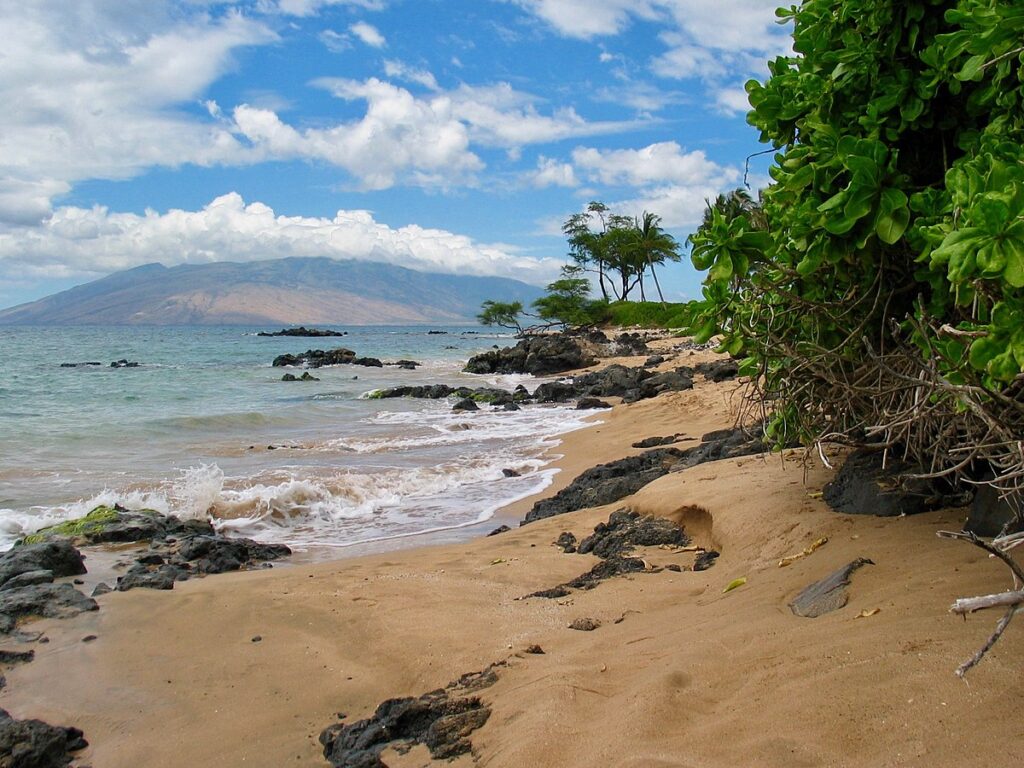
Moving to Kihei, Hawaii: A Comprehensive Relocation Guide
Considering moving to Kihei, Hawaii? This sunny Maui community offers affordable beaches, laid-back character, and island lifestyle. With approximately 22,000 residents in 2025, Kihei combines beach town atmosphere with accessible living and South Maui’s most affordable destination.
Demographic Profile to Consider If Moving to Kihei:
Kihei’s 2025 population is approximately 22,000 residents in this unincorporated South Maui community stretching along six miles of coastline. The median age is around 45 years, with retirees, service workers, families, and beach lovers. The population is approximately 48% White, 25% Asian, 15% Two or More Races, 8% Native Hawaiian and Pacific Islander, 3% Hispanic. Kihei features condominium complexes, beach parks including Kamaole Beach Parks I, II, and III, unpretentious character, and sunny weather (driest side of Maui). The community maintains laid-back beach town atmosphere without resort development of Wailea. Kihei attracts retirees, service industry workers, and those seeking affordable Maui beach living. The area values unpretentious character, beach access, and resisting exclusive resort development. Find trusted local services for moving, living, and working in Kihei.Kihei Relocation Directory
Cost of Living to Consider If Moving to Kihei:
Kihei offers Maui’s most affordable coastal housing, though still expensive by mainland standards. Median home values range from $750,000 to $1.1 million in 2025, lower than Wailea or upcountry while providing beachfront access. The median household income is approximately $72,000. Rental properties average $2,400 to $3,600 monthly with many long-term rentals converted to vacation rentals creating challenges. Hawaii has high excise tax (4.5%). Overall cost of living is very high with expensive groceries (70-85% above mainland), costly gas, and high utilities. Kihei provides relative Maui value for beach access. Housing costs remain extreme though lower than luxury resort areas. Many service workers struggle with costs. Vacation rental proliferation limits long-term housing availability creating affordability crisis.
Economy and Job Market:
Kihei residents typically work in South Maui hospitality, retail, or commute to other Maui regions. Many work at resorts in Wailea, restaurants, shops, and services throughout South Maui. Some commute to Kahului for other employment. The economy depends on tourism supporting hospitality employment. Many residents work multiple jobs to afford island living. Some work remotely. Typical industries include tourism, hospitality, retail, and services. The economy operates seasonally with winter being peak. Many service workers choose Kihei as the most affordable option for beach living while working Maui tourism jobs.
Education:
Hawaii Department of Education operates Kihei schools including Maui High School (in Kahului, students commute) and Kihei Elementary and Lokelani Intermediate locally. School quality varies. The educational infrastructure serves the community though students commute to Kahului for high school.
Recreation and Lifestyle:
Kihei offers six miles of beaches with Kamaole Beach Parks I, II, and III (“Kam I, II, III”) providing excellent swimming, snorkeling, and beach activities. Residents enjoy year-round beach life with South Maui’s sunny weather (300+ days). The area provides stand-up paddleboarding, kayaking, surfing, and ocean access steps from condos. Nearby Makena Beach and Big Beach offer additional pristine shores. Molokini Crater snorkel/dive trips depart from nearby Maalaea Harbor. Residents access Haleakala National Park for sunrise experiences. The lifestyle emphasizes beach living, water sports, laid-back atmosphere, and unpretentious island character. The consistent sunny weather contrasts with rainy windward areas. The community values beach access, casual atmosphere, and resisting resort development. Living in Kihei means accepting vacation rental impacts (parking challenges, transient neighbors), high costs, and trading upscale amenities for beach access and affordability (relatively). The area’s condo-heavy development creates rental opportunities but challenges for those seeking single-family homes.
Healthcare and Services:
Kihei residents access healthcare through clinics in Kihei and Maui Memorial Medical Center in Kahului (20 minutes). The healthcare infrastructure requires some travel for comprehensive services. Emergency services operate throughout South Maui.
Transportation:
Kihei is accessed via Piilani Highway connecting to Kahului Airport (20 minutes) and other Maui regions. Maui Bus operates limited routes through Kihei. Most residents require personal vehicles. Gas is very expensive. The six-mile stretch of Kihei creates traffic congestion on South Kihei Road during peak times. Typical commute times to Kahului or Wailea are reasonable.
Conclusion:
Moving to Kihei in 2025 offers affordable Maui beach living with sunny weather, laid-back character, and ocean access. The community’s combination of Kamaole beaches, unpretentious atmosphere, and relative affordability makes it ideal for beach lovers, retirees, and service workers seeking Valley Isle lifestyle where beach life meets affordability (relatively) and 300 days of sunshine define South Maui’s most accessible coastal community.

